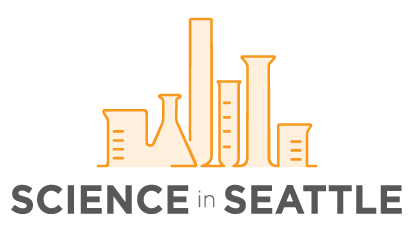This week we profile a recent publication in Angiogenesis from Drs. Alfred Aplin (pictured, right) and Roberto Nicosia (left) at UW.
Can you provide a brief overview of your lab’s current research focus?
Atherosclerosis-associated angiogenesis has been the focus of our research during the past years. Angiogenesis, the process of formation of blood vessels, is essential during embryonal development and the repair of injured issues, but it can also contribute to the progression of many diseases including atherosclerosis. Atherosclerosis is characterized by formation within the wall of the aorta and its main branches of plaques that can obstruct blood flow to vital organs. Atherosclerotic plaques become vascularized as a result of angiogenesis which contributes to the morbidity and mortality of atherosclerosis.
What is the significance of the findings in this publication?
Atherosclerotic plaques are commonly asymptomatic but can progress into unstable lesions which rupture and thrombose causing heart attacks, strokes, and gangrene. Plaque instability is often caused by hemorrhages which are an important predictor of disease progression. Hemorrhages cause plaque disruption, cholesterol accumulation, cell injury, and inflammation, ultimately leading to plaque rupture, thrombosis, and cessation of blood flow. A potentially important source of hemorrhage within plaques are the angiogenic neovessels that are structurally weak and prone to bleeding.
Neovessels that have penetrated into an atherosclerotic plaque are exposed to severe hypoxia caused by the plaque inflammatory environment and insufficient oxygen (O2) supply (hypoxia). Work in this field has been conducted mostly at atmospheric O2 levels, and no studies have investigated the role of hypoxia in the dysfunction of neovessels induced by atherosclerotic lesions. Prior to our current study, there were no data, to our knowledge, on the effect of improved oxygenation on the stability of human plaque-induced neovessels and the prevention of hemorrhage-induced plaque disruption in vivo.
To fill this gap, we used novel ex vivo and in vivo models to characterize the effect of O2 on the formation, stability and tendency to bleed of human plaque-induced neovessels. In particular, we used the rat aortic ring assay, originally developed in our laboratory, to measure plaque-induced angiogenic activity. Using this approach, we found that angiogenesis was potently stimulated by plaque explants at atmospheric O2 but inhibited by hypoxic levels (1% O2) comparable to those present in atherosclerotic plaques. Hypoxia also weakened the angiogenic neovessels by depleting them of pericytes, cells that are needed for vessel stability. We reproduced the plaque/angiogenesis-induced hemorrhagic process in vivo by implanting human plaques with aortic rings in the subcutaneous space of mice. Intriguingly, when mice were exposed for several days to moderate ambient hyperoxia (50% O2) which improved oxygenation of the angiogenic environment, hemorrhages were significantly reduced. Decreased bleeding was associated with increased influx into the implants of pericyte-like cells and increased expression of genes associated with vessel stability.
Our results suggest that the formation of neovessels that are stable, pericyte-coated, and resistant to bleeding requires adequate tissue oxygenation. Understanding the mechanisms by which O2 stabilizes neovessels and mitigates neovessel bleeding may lead to new therapies for the prevention of atherosclerosis complications.
What are the next steps for this research?
Our studies and findings should be reproduced in an orthotopic model in which atherosclerotic plaques form within the arterial wall, become vascularized, and develop hemorrhages and thrombosis as seen in human atherosclerosis. This approach has been hampered so far by the lack of adequate animal models. The use of transgenic mouse models that mimic some of these complications may help fill this gap.
A potential limitation of O2 therapy stems from the feasibility and practicality of treating patients with hyperoxia which may have toxic effects. Although the mice used in our study showed no signs of distress after exposure to moderate hyperoxia, toxicity is still a valid consideration for prolonged and repeated use of O2 therapy. The next frontier in this critical area of research should be the development of new therapies aimed at improving tissue oxygenation while eliminating the potentially toxic effects of excessive O2. Recently developed drugs that bind O2 tightly releasing it only to severely hypoxic tissue may overcome these limitations.
If you’d like us to mention your funding sources, please list them.
Grant-in-Aid from the American Heart Association.

